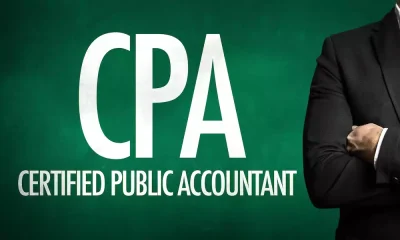Accounting & Finance
How To Maximize Business Revenue

You reap what you sow in business. The time and energy you spend on focusing on things resulting in revenue are what you get back in a healthy growing business.
Companies that get confused, that think their goal is revenue or stock price or something. You have to focus on the things that lead to those.
Tim Cook
Revenue Drives Business
It’s the revenue that accelerates the growth, helps fund marketing activities, and fills coffers from which you pay a handsome salary to the employees.
Without revenue, businesses die, and taking your revenue from zero to hero is much easier said than done. Irrespective of the number of customers you serve and the number of distribution channels you market, it’s the bottom line that dictates the difference between a thriving and struggling business.
This is because your customers are indifferent towards your profit margin. They require high-quality products or services at reasonable prices.
According to research, almost half of all full-time small businesses in the U.S. make less than $75,000 a year. If you’re a part of the statistics, you need to have a sound strategy to maximize the business revenue. Do you know your customers needs and wants as well as you can? Get started with this complimentary value proposition template to unlock what you don’t know of your customers motivations so you can sell more.
How to Maximize Business Revenue?
The phrase ‘you can’t see the forest for the trees’ holds when you’re trying to look for ways to increase the business revenue. What you truly require is shifting your perspective, and you will generate more revenue from the available sources within your business. Here are five proven ways of maximizing business revenue.
Focus on a yield management system
What do airlines, hoteliers, cinema hall owners, and restaurant owners fear the most?
It’s neither occupancy nor customer service – it’s maximized revenue or, in other words, increased yield.
Increased yield revolves around the concept of yield management.
Yield management is a strategy based on how well you understand, anticipate, and influence customer behavior to maximize revenue from time-limited resources (tables in restaurants, rooms in the hotel, tickets in a cinema hall, seats in airlines, etc.).
The idea of this variable pricing strategy is to sell a product or service at the right price to the right consumer at the right time.
In other words, it means changing the prices to match the ongoing fluctuation of supply and demand. Yield management makes the most of your occupancy and ensures a higher revenue even when the occupancy is not 100%.
Let’s understand it with an example.
Suppose an airline has 50 seats and the revenue available per seat is $200. Now consider these cases.
Case 1: When all the seats are occupied. You earn revenue of $10,000
Case 2: During the peak season, you increase the revenue per seat from $200 to $250. If you book all the seats, your revenue would be $12,500.
It boils down to:
Higher demand = Higher prices.
By understanding the booking pattern, a yield management system has created a successful and profitable pricing strategy.
Benefits of using a yield management system
- Increases revenue
- Reduces errors
- Helps in understanding customer expectation
- Allows effective segmentation
Yield management is an excellent revenue-maximizing machine if you know how to implement it correctly.
Give importance to existing customers.
Acquiring new customers is five times more costly than retaining the existing ones. You can increase business revenue by focusing on existing customers.
Instead of forging a new relationship and convincing a stranger, start by upselling and cross-selling products or services with someone who already values your offerings.
Here’s why it’s essential
8 in every 10 customers are willing to pay more for a better customer experience says some research, while Statista says 57% of all adults will pay more. Your existing customers will pay more for your products or service on improving the current process. It increases the revenue without the recurring cost of different marketing channels.
Ways of increasing revenue from existing customers
Reward loyalty
Offering an incentive, freebies, and discounts to reward allegiance. Your loyal customers will become your cheerleaders and brand advocate, which they can do with their social media followers, and these actions further increase the revenue stream.
Upsell, cross-sell and bundled service
Existing customers offer excellent opportunities to upsell and cross-sell. The former is a practice of encouraging customers to buy a higher-end product than the one they already use. While the latter invites the customer to buy related items. Plus encourage the bundled service and sell them one thing, two things, and so on.
Referral programs
Use referral programs to leverage existing customers to make new ones. 85% of small businesses get new customers through referrals.
Customer analysis and behavior
Know the pain points and address the unmet demands. Create a feedback loop to understand the customer behavior and perception about the brand.
As your existing customers already trust your brand, you must increase the perceived value of the products you offer. Once the perceived value increases, there will be no shortage of cash flows.
Build a website
With 70-80% of people researching a company online before making a purchase, the website could be the difference between low and high revenue. Today, in the technological-driven world, having a robust online presence is imperative and has become a necessity.
That’s why businesses, whether B2B or B2C, require a well-designed mobile-friendly website.
One of the primary goals of a successful web presence is maximizing business revenue.
Whether you achieve it using a mobile app or a mobile-friendly design, a website plays a crucial role in attracting customers to a business.
Way to maximize revenue using a website
- Provides an opportunity to reach new target customers through different mediums such as social media and search engines
- Helps in increasing lead conversions
- Makes referrals easy
- Creates an authentic sales conversion funnel
- Builds trust through reviews
- Incorporates upselling
- Give you the ability to be in the business and visible 24/7
From the web design to navigation, every aspect of the website should result in a seamless experience; otherwise, your visitors will likely switch to the competitors.
Retire a low performing product or services
When deciding to retire a low performing product, the golden rule to follow is to create an income statement broken into different segments. The income statement gives details on each income source and helps you understand how much revenue every product brings to the business.
If you find a product that is merely consuming and absorbing the resources with little or no revenue, it might be a sign to retire it.
When calculating the cost of keeping a product in the product line, always include the labor cost, margin cost, overhead cost, marketing, and maintenance. Retiring a product paves the path for an additional revenue stream as you allocate the resources to other revenue-generating areas.
Going through each product’s performance in your product mix helps find their contribution to the bottom line.
Focus on brand consistency
Success isn’t always about greatness. It’s about consistency
What’s the similarity between brands like Apple, Coca-Cola, Facebook, or Google?
These brands ooze success and speak of consistency.
Brand consistency ensures your brand is recognizable across marketing channels and touchpoints, thereby translating to higher revenue.
Customers appreciate consistent branding, and such brands witness an increase in revenue by 33%. Strong branding generates interest, strengthen the marketing strategy, and help in attracting new customers.
For maximizing business revenue, your branding should be consistent in the following areas:
Customer experience
A consistent customer experience builds trust and confidence in a brand.
Brand identity elements
Ensure all the visual brand components are in sync as they make your brand recognizable. Apple uses a uniform brand logo through its marketing channel and communication.
Way to increase revenue through brand consistency
Shapes a brand perception, and customers don’t mind paying higher prices for products they perceive value.
Brand consistency builds trust and confidence among the customers, and they don’t hesitate to engage with such a brand.
The most consistent brands are probably the most credible brands. And, credibility results in higher revenue.
It helps meet customer expectations, and such customers are likely to come back to your brand every time.
Think of different ways to hammer down your brand consistency like no other brand. Chances are, you will find yourself on the right side of success.
Conclusion
Running a successful business is more of a balancing act, which comes to a grinding halt when your expenses overshoot the revenue. To stay afloat and profitable, you must maximize your revenue.
You don’t have to make a drastic change to your business to improve the bottom line, a simple tweak in your branding strategy or changing the pricing strategy could pave the way for increased revenue.
The key to maximizing revenue has always been the same: creating value. Revenue will increase when you add value faster than your competitors. The number of ways you can create and add value to your product or service is your imagination.
Focus on these five strategies to add value and win the customers’ trust – as it eventually leads to higher revenue.









